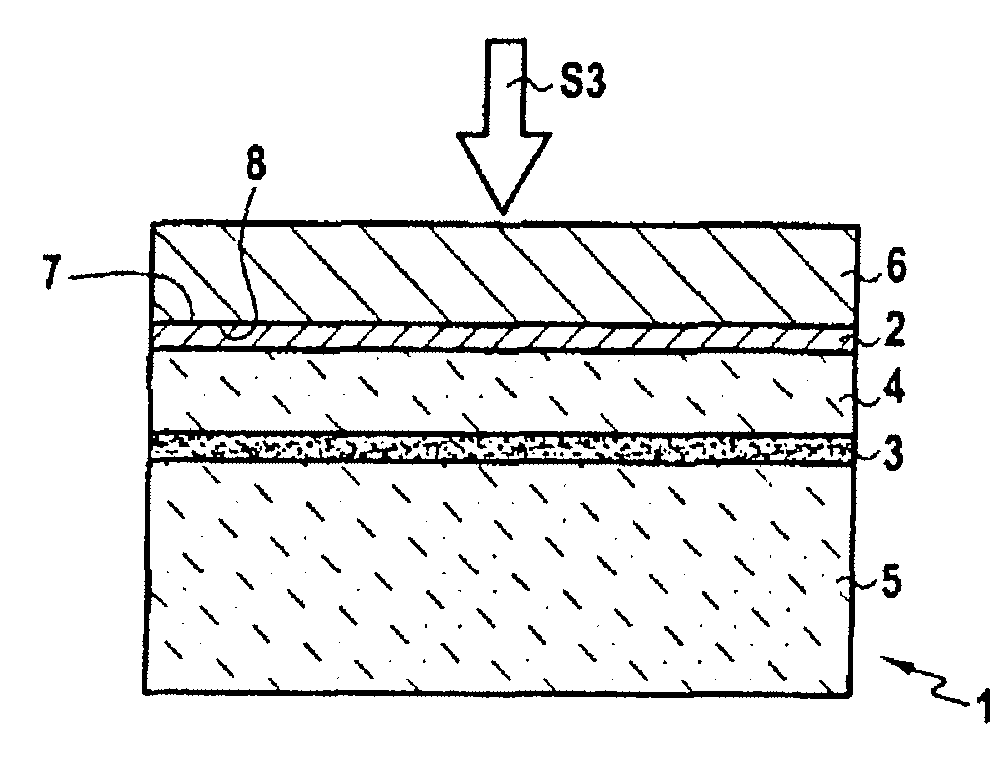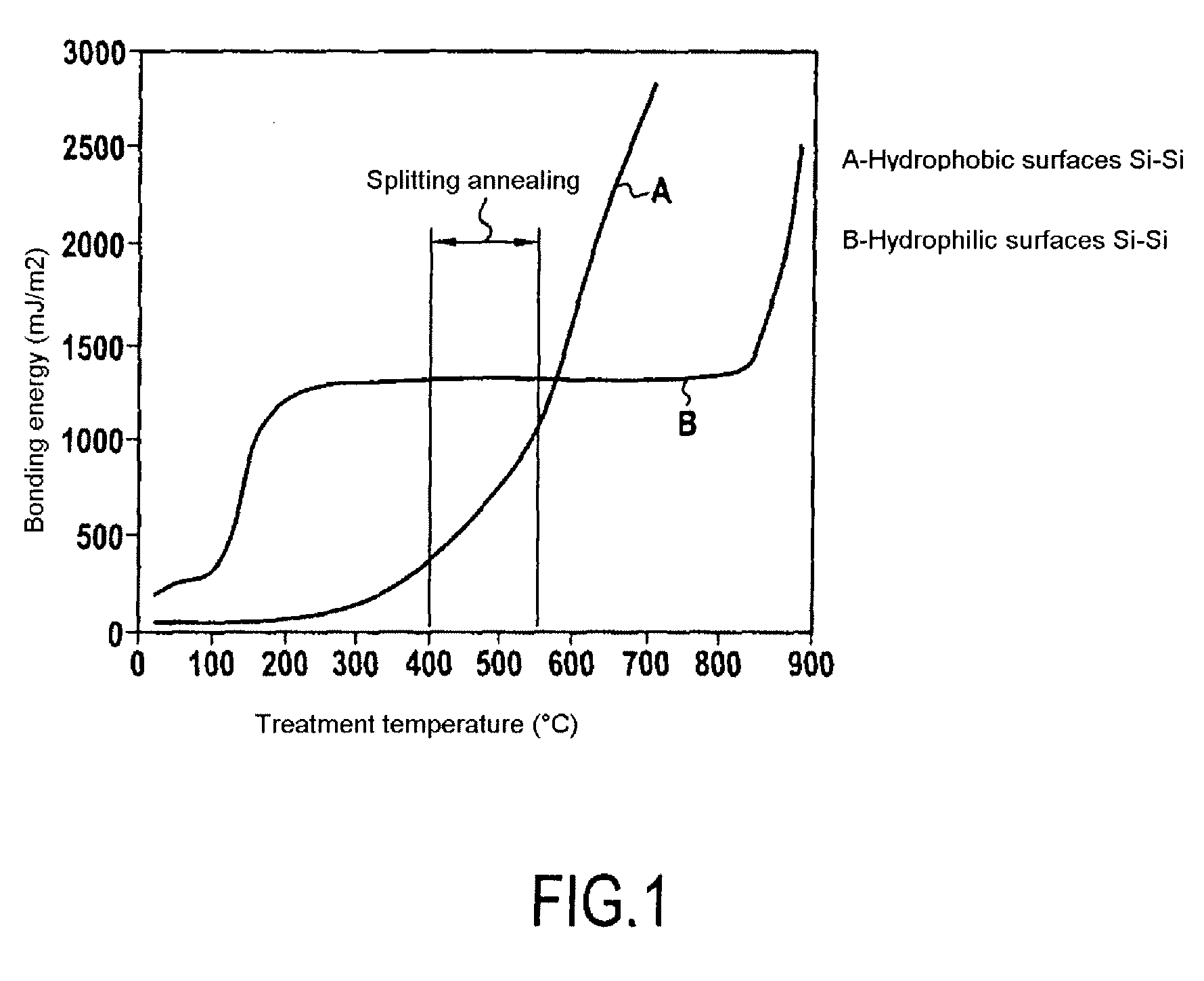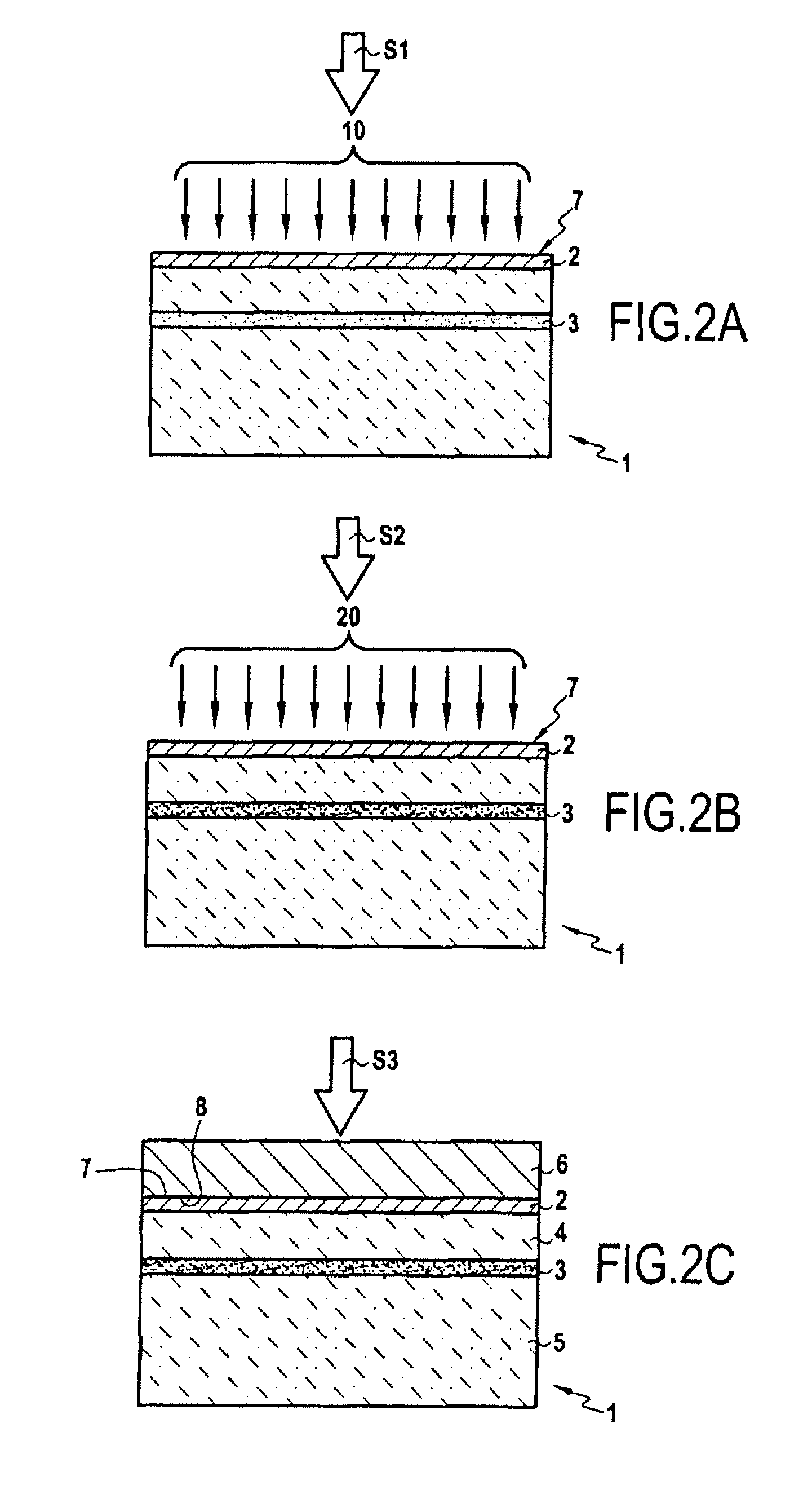Process for high temperature layer transfer
a transfer layer and high temperature technology, applied in the direction of basic electric elements, semiconductor/solid-state device manufacturing, electric apparatus, etc., can solve the problems of different types of surface defects, poor transfer, and defects in the heterostructure so obtained, so as to reduce the defect rate of the heterostructur
- Summary
- Abstract
- Description
- Claims
- Application Information
AI Technical Summary
Benefits of technology
Problems solved by technology
Method used
Image
Examples
Embodiment Construction
[0037]The present invention applies to any thin layer transfer method using at least one atomic species implantation of a donor substrate to delimit a thin layer to be transferred by a breaking plane, bonding of the implanted donor substrate onto a receiving substrate, and application of a heat treatment called splitting annealing at high temperature to separate the layer to be transferred from the donor substrate as in SMART-CUT® technology.
[0038]The principle of the invention consists of increasing the temperature of splitting annealing required for the formation and development of a weakened zone, comprised of microcavities or platelets, to cause a fracture in the donor substrate so as to increase the bonding energy at the interface between the donor substrate and receiving substrate.
[0039]Typically, splitting annealing in SMART-CUT® technology for substrates of silicon type is conducted over a temperature range of between 400° C. and 500° C. for a determined time (the temperatur...
PUM
 Login to View More
Login to View More Abstract
Description
Claims
Application Information
 Login to View More
Login to View More - R&D
- Intellectual Property
- Life Sciences
- Materials
- Tech Scout
- Unparalleled Data Quality
- Higher Quality Content
- 60% Fewer Hallucinations
Browse by: Latest US Patents, China's latest patents, Technical Efficacy Thesaurus, Application Domain, Technology Topic, Popular Technical Reports.
© 2025 PatSnap. All rights reserved.Legal|Privacy policy|Modern Slavery Act Transparency Statement|Sitemap|About US| Contact US: help@patsnap.com



